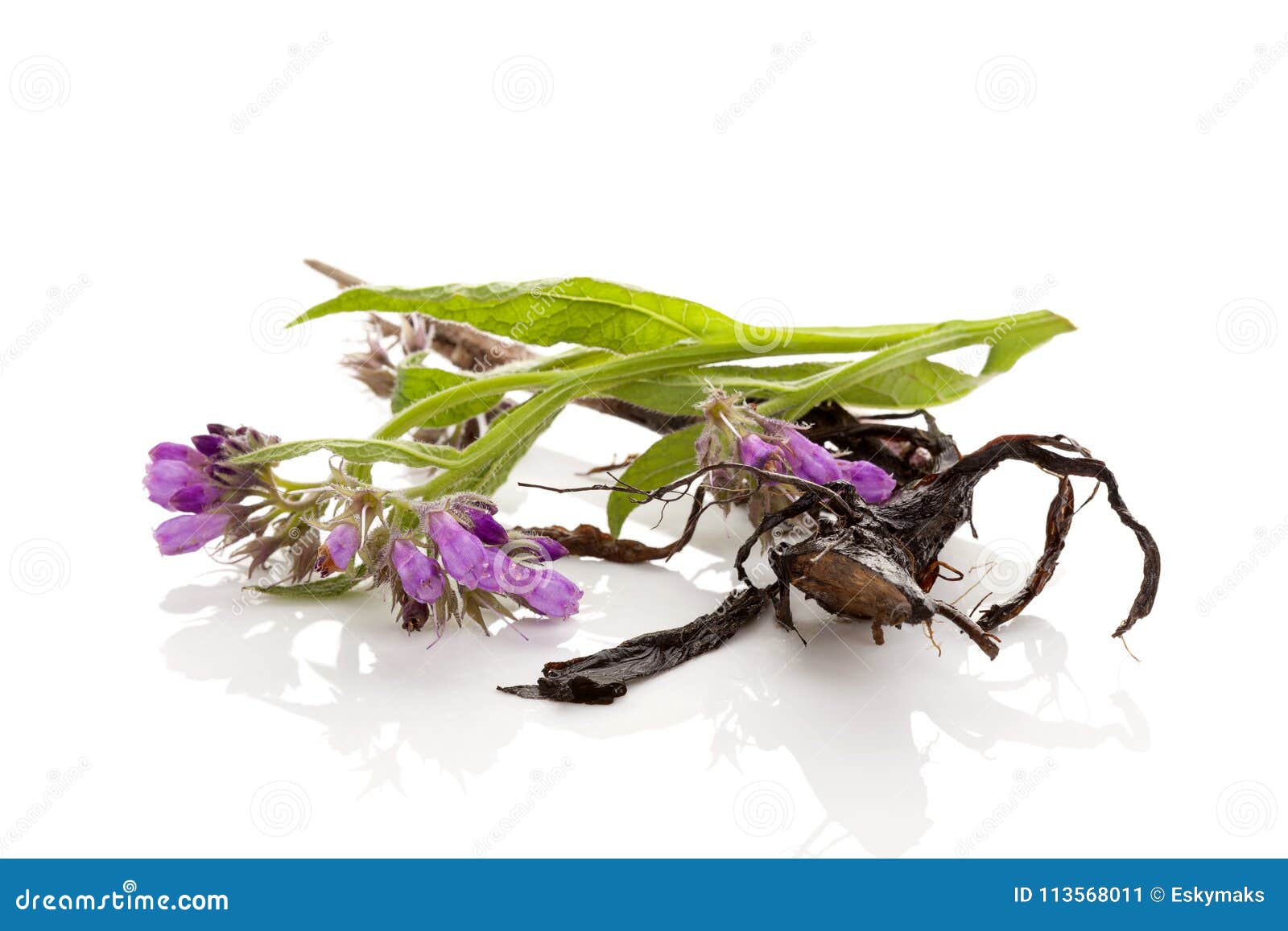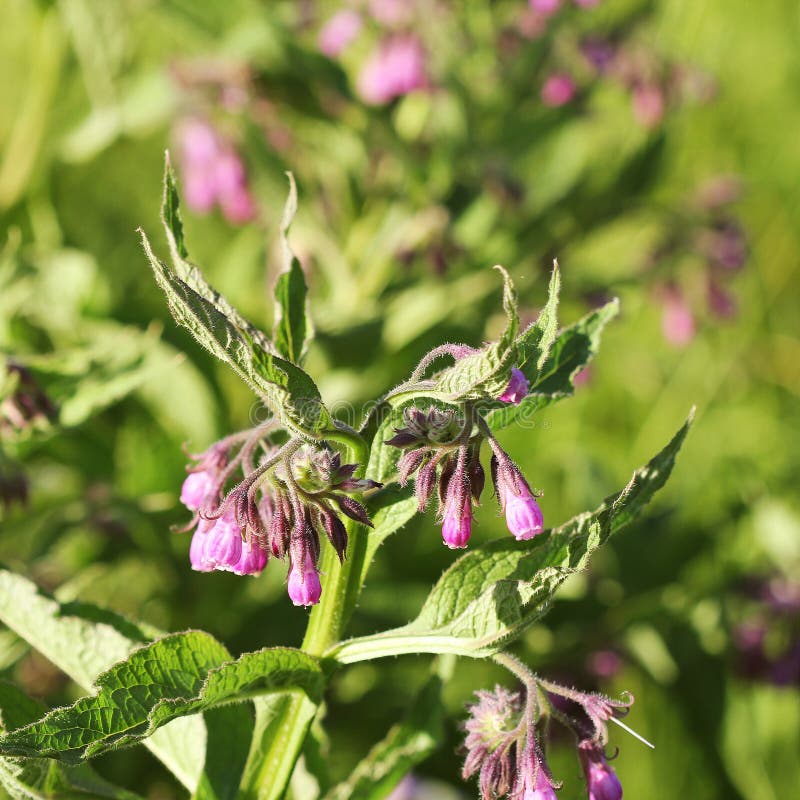

Mostly absent also in the great plains states. Comfrey is found in most of North America except the far north Canadian Provinces and the far south states of the U.S. It has not been recorded on any Garden census and is currently absent from the Garden. Notes: Comfrey has made its appearance in the Garden in the 1990s up through at least 2005 when it was mentioned in a Naturalists' report it was found in the Woodland Garden along Lady-slipper Lane in the Marsh. "Asses' Ears" refers the large soft lower leaves. All the various alternate common names have reference to the medicinal uses of the plant in old medicine. The author name for the plant classification - 'L.' is for Carl Linnaeus (1707-1778), Swedish botanist and the developer of the binomial nomenclature of modern taxonomy. The species officinale usually means 'sold in shops' referring to the use of this plant in herbal medicine. From those terms you may derive the meaning of healing broken bones - one of the former herbal uses of the plant tissue. The genus Symphytum is from the two Greek words - symphyo, meaning 'make to grow together' and phyton, meaning 'plant'. Names: The common name is from the Latin conferva meaning knitting together, referring to the plants medicinal qualities. When planted it needs plenty of moisture when young, rich soils, and does best under tree shade. In the wild it has escaped from cultivation and will generally be found in disturbed sites. Habitat: Comfrey grows from large coarse spindle shaped tuberous roots that have a black outer coating and produce a stout deep taproot. Toxicity and medicinal use - parts of the plant are toxic - see notes at page bottom. Seed: Flowers that are fertile produce 4 brownish-black nutlets that are nearly smooth, angled on two sides with a concave base. There are 5 stamens which cluster together at their tops around the single style. The flowers are perfect but frequently the ovary is sterile. The five lobe tips of the corolla are very short and spreading.

The color is whitish with tones of purple to pink. The entire calyx is much shorter than the corolla which is tube shaped, about 1/2 inch long with a distinct waistband where the upper section is a little more inflated. The individual flowers have stalks with spreading hairs, leading to a green hairy calyx that has 5 lance-shaped pointed lobes. These cymes are usually in pairs and the curve is said to resemble a scorpion's tail. The inflorescence is a leafless curving branched cluster (a cyme) which is terminal and can also arise from the upper leaf axils. Margins are without teeth and the veins have a distinctive net pattern. Leaves are thick and rough, fine hair on both surfaces with longer hair on the underside veins, the margins and the leaf stalks dark green surface on top, paler on the underside. The wings of the stalks continue down the stem creating the wing on the stem. Leaves decrease in size up the stem the very upper leaves may be stalkless. The lower basal leaves are broad and up to 8 inches long, ovate-lanceolate in shape with pointed tips and a base that tapers to a winged stalk. – Origin: Native to parts of Asia and also Europe.Comfrey is an introduced erect perennial herb, growing on hairy winged branching hollow stems from one to three+ feet high. – Deer & Rabbit resistant: Known to be a good deer and rabbit resistant option because they do not enjoy the taste or texture. Should be cut back to ground level once the growth fades because this will result in lush new growth. Remove spent flowers and growth to keep a tidy plant. It is perfectly fine to handle but it is advised not to eat the leaves, so caution must be be taken. – Beware: Symphytum has been used for many years for medicinal purposes, and is even referred to as a herb, but it can have poisonous effects if ingested. – Attracts: Bees as well as other beneficial insects. – Soil: Will tolerate most soil conditions but must be well drained. Although harsh sun may scorch the leaves, the plant will bounce back happily.
White flower comfrey full#
– Position: Part Shade, Dappled Sun, Deep Shade and even Full Sun. Additionally Comfrey leaves can also be added to compost and result as a great activator. A tough and useful plant because it will grow in Shade or Sun, and is invaluable in Dry Shade. Perfect blooming groundcover under trees and shrubs in tough spots. Symphytum ibericum DWARF WHITE COMFREY is a good weed suppressing carpet for shaded gardens. Mass of white bells on stems 25cm high above a dense mat of evergreen foliage.


 0 kommentar(er)
0 kommentar(er)
